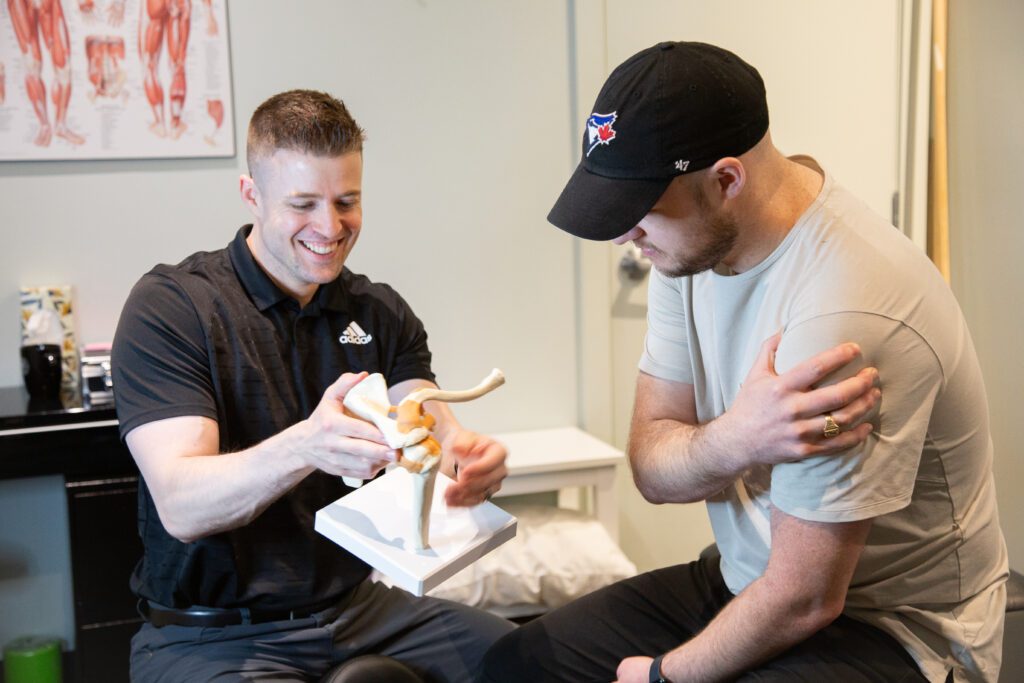Frozen shoulder, also known as adhesive capsulitis, is a condition characterised by pain and stiffness in the shoulder joint. It typically develops gradually over time and progresses through three stages: freezing, frozen, and thawing.
During the freezing stage, pain and stiffness gradually increase, limiting shoulder movement. In the frozen stage, pain may decrease, but stiffness remains severe, significantly restricting shoulder mobility. Finally, during the thawing stage, shoulder movement gradually improves, and symptoms begin to resolve.
The exact cause of frozen shoulder is not fully understood, but it may result from inflammation, scar tissue formation, or changes in the shoulder joint capsule. Risk factors for frozen shoulder include age, gender (more common in women), some medical conditions, and shoulder injury or surgery.
Chiropractic treatment may include adjustments to the spine and shoulder, soft tissue therapy, and rehabilitative exercises to improve shoulder mobility and function.






